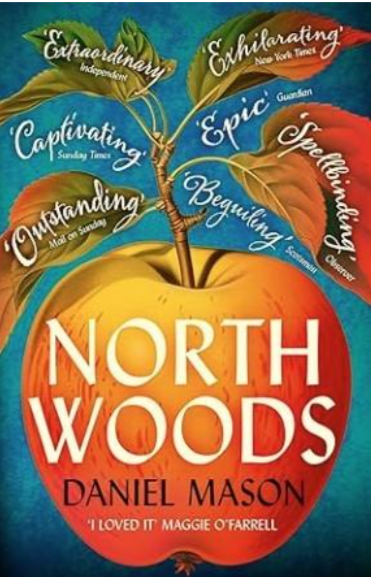
As a writer, you likely read widely and understand that reading as a writer means going deeper. It means looking under the surface of a story to see how it’s made. What choices did the author make? Why did they choose that structure, that perspective, that voice? And most importantly, what effect does it have on the reader?
When you take the time to break down a novel’s craft, you do more than admire the result; you learn how to build your own. Every great book is a workshop in disguise. It can teach you how to handle time jumps, shift point of view, create emotional echoes, or slip humour into heavy themes.
Whether you write fiction, memoir, or genre-defying hybrids, studying novels can unlock new ideas and techniques to experiment with in your work.

Cover image © Hachette UK. Used under fair use for commentary.
Considering structure and time
Let’s explore Daniel Mason’s North Woods, which isn’t a novel so much as an ecosystem! An intricately layered, quietly astonishing work that pulses with history, memory, and the hidden lives of people and place.
I love this book and admire it as a literary masterpiece, largely due to its spellbinding structure and the writerly tools Mason wields with precision: shifting point of view, fluid timeframe, emotional restraint, and quiet wit.
Not forgetting, of course, his masterly knowledge of weevil copulation.
At its heart, North Woods tells the story of a house, a slice of land and the inhabitants that move through it over the centuries. The novel builds not one narrative arc, but dozens of threads that loop back and forth across time, from Puritan runaways to orchardists, war veterans to spiritualists.
The author approaches time not as a fixed sequence but as something more natural, layered and quietly evolving. Each chapter stands on its own, whether shaped as a letter, a report, or a slice of story, but they knit together into something more powerful. Like branches growing from the same stem, they spread in different directions, yet remain rooted in shared emotion and theme.
Tension here doesn’t build through the plot alone, but through repetition and resonance; time folds rather than marches.
If you’re a writer working with fragmented or non-linear narratives, North Woods shows that structure can flourish when your voice is steady and your themes are carefully cultivated.
Multiplying meaning with points of view
Mason’s range of perspectives is astonishing: first person, third person, omniscient, and even insect. One chapter follows a young girl in a fever dream; the next, a beetle’s crawl through a rotting wall, but the author hasn’t gone slightly mad; it’s a tool of empathy, where different points of view help readers develop a deeper sense of connection.
Mason’s shifts are intentional and loaded with meaning. They allow him to explore human fragility, natural cycles, and generational repetition from every possible angle. Voice changes aren’t just stylistic; they change what’s emotionally possible.
If you’re struggling to add depth to your novel, consider how point of view could help with the heavy lifting. Undertake an exercise where you write a chapter from another perspective and see how it pans out. Does it add flavour that you hadn’t anticipated?
Connection without centrality
In North Woods, no single protagonist dominates the novel, and yet there’s extraordinary emotional continuity. Shared grief, loss, missed opportunities, yearnings or fixations. Objects reappear. Legends mutate. A stone left in one century is turned over in another.
This kind of layered storytelling invites close attention and offers a valuable approach for writers, developing character through recurring images and emotional threads rather than exposition.
If you’re working with multiple points of view or linked narratives, Mason demonstrates how feeling and pattern can hold the structure together. It’s the relationships between scenes, voices, and ideas, not just the individuals themselves, that keep the reader engaged.
Humour as levity
Despite its historical sweep, North Woods is often slyly funny. Mason inserts absurdity in the right places: a mould-obsessed orchardist, an amateur séance, a taxidermist with spiritual theories.
The characters are vivid, brightly lit by the lives they are living, and it’s these details that punctuate the emotional weight with levity, without undercutting it. A shade of humour, if used effectively, can help your story breathe.
Key takeaways
North Woods is a considered read. It’s a novel to live inside. I highly recommend it if you’re keen to explore a story grounded in history, sculpted by form, softened with age, and edged with quiet clarity.
What tools or ideas can you observe as a writer?
- Structure can echo meaning
- Point of view can expand your world
- Recurrence can build connections
- Effective humour can lighten powerful themes
- Nature can be a character
If you’re crafting something ambitious, fragmented, or deeply rooted in place, North Woods is a great companion. Not just for inspiration, but to help you understand how effective writing techniques can work.
Learn how studying novels like North Woods can sharpen your structure, voice and storytelling. Spot the tools behind the scenes and use them in your work.
Uncover the hidden heartbeat of your novel. This blog explores how theme shapes plot, character and cover design, and how developmental editing can help your story grow.



